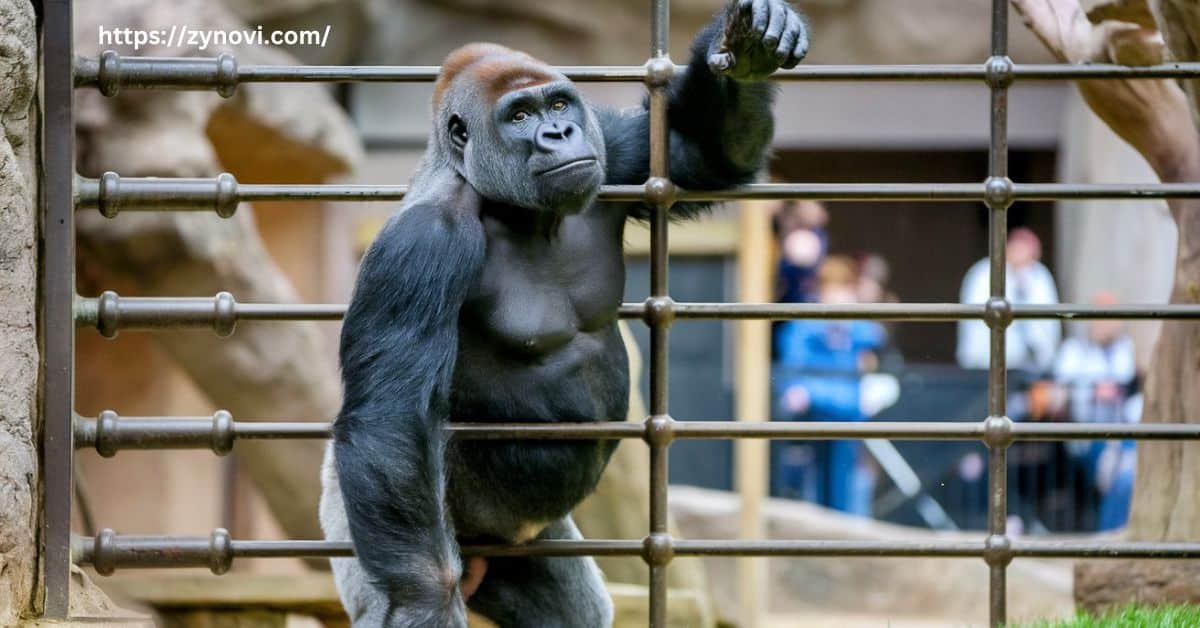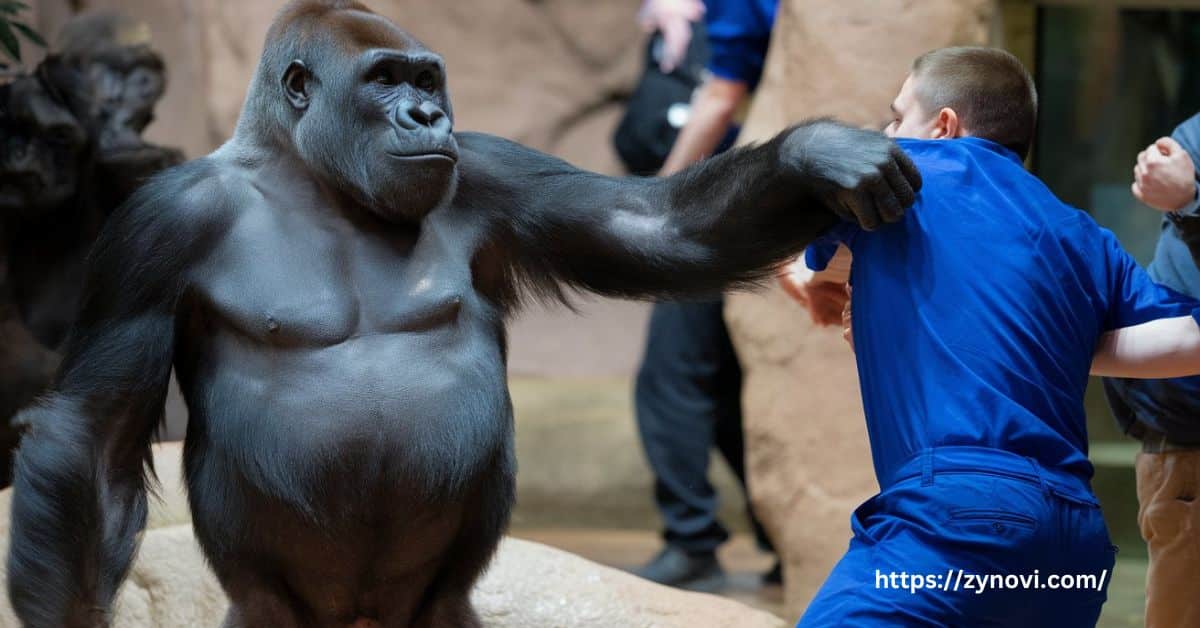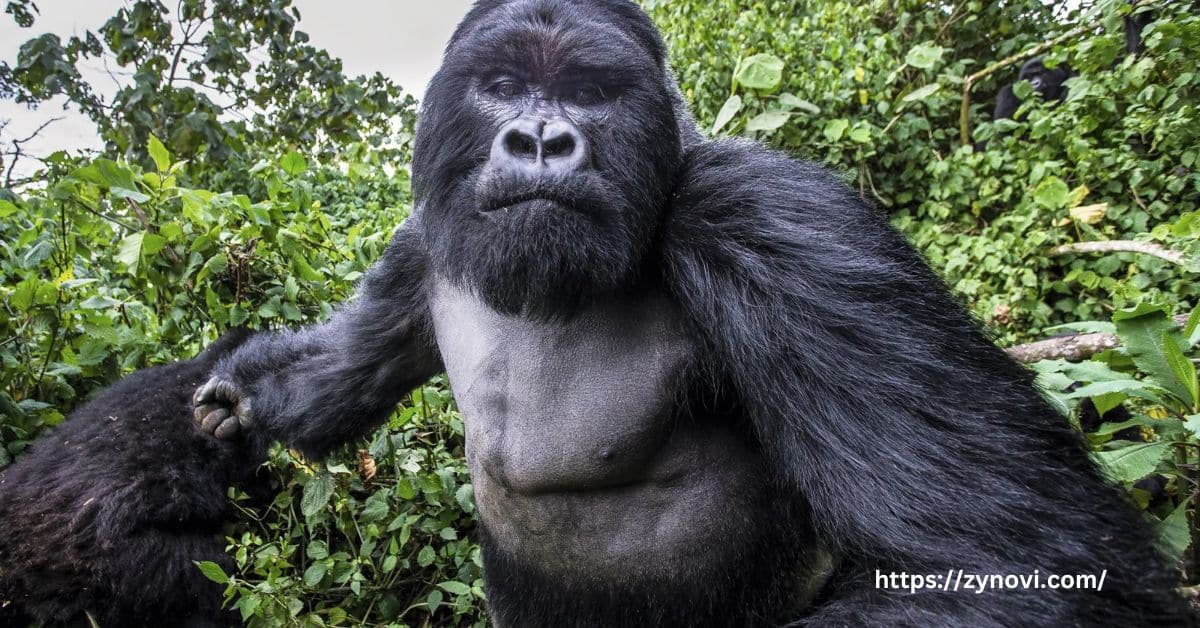Do gorillas attack humans? They rarely attack humans, but in certain situations, such as feeling threatened or provoked, they may act defensively.
It’s a question that sparks curiosity, fear, and intrigue. These majestic creatures, often admired for their strength and intelligence, can seem intimidating, but do they really pose a threat to us? In this article, we’ll uncover the truth behind gorilla behavior and explore the rare instances when an attack might occur.
But don’t worry, it’s not all about danger! You’ll also learn about how these powerful animals interact with humans, how to stay safe in their presence, and what makes gorillas such fascinating beings. So, keep reading to discover the fascinating world of gorillas!
Understanding Gorillas
When you think of gorillas, you might picture a strong, majestic animal, sometimes intimidating, yet mostly peaceful. But there’s an often asked question: Do gorillas attack humans?
Before answering whether gorillas attack humans, it’s important to first understand these remarkable creatures.
What Are Gorillas?
Gorillas belong to the primate family, a group that includes humans, chimpanzees, and orangutans. Gorillas are large, intelligent animals native to Central Africa, and they fall into two primary species: the Eastern Gorilla (which includes the endangered mountain gorillas) and the Western Gorilla.
| Aspect | Details |
|---|---|
| Diet | Herbivores, primarily consuming leaves, stems, and fruits. |
| Foraging Habits | Their foraging habits play a key role in shaping their social and ecological roles. |
| Social Structure | Live in troops led by a dominant male, called a silverback. |
| Troop Composition | Made up of females, young gorillas, and sometimes other males. |
| Silverback Role | The silverback acts as the protector, defusing conflicts and ensuring troop safety. |
| Genetic Similarity | Share about 98% of their DNA with humans, making them one of our closest relatives. |
| Intelligence | Gorillas exhibit complex intelligence and social behaviors, reflecting a deep bond within their groups. |
Gorilla Behavior and Social Structure
Gorillas communicate with each other through various methods. They use non-verbal communication such as chest-beating, loud vocalizations, and facial expressions to convey emotions.
These signals are essential for maintaining order within the group and for avoiding unnecessary conflicts. A gorilla’s territorial behavior is also prominent, especially in wild populations.
They are known to fiercely protect their habitat, but not out of malice rather, it’s about maintaining their space and ensuring the safety of their troop.
Do Gorillas Attack Humans?

While many people fear gorillas as dangerous animals, the reality is that gorilla attacks on humans are extremely rare. So, what causes the occasional aggression, and when should we be cautious?
What Makes Gorillas Feel Threatened?
Gorillas are typically peaceful creatures, but they will defend themselves if they feel threatened. Several factors can lead to an aggressive response:
- Territorial Intrusion: Wild gorillas, especially silverbacks, are highly protective of their territory and will often react defensively to any intruders.
- Unfamiliar Threats: Sudden movements, loud noises, or perceived danger can provoke an aggressive reaction. For example, a mock charge, where a gorilla charges and stops just short of the threat, is a common warning sign.
- Proximity Tolerance: Gorillas have a limited tolerance for human proximity. If they feel that a person is too close, they might see this as an invasion of their personal space, leading to aggressive postures.
Defensive Behavior vs. Aggression
It’s important to differentiate between defensive behavior and true aggression. A gorilla may display aggressive behaviors such as chest-beating, loud vocalizations, and direct eye contact to warn off perceived threats. These are often not signs of wanting to attack but rather a way to assert dominance and establish boundaries.
- Defensive Behavior: This includes intimidating gestures like mock charges and warning calls. Gorillas use these signals to make threats clear without engaging in physical combat.
- True Aggression: True aggression, though rare, can occur if the gorilla feels physically threatened or cornered. It’s important to recognize the signs of distress in gorillas, such as agitated gestures or sudden changes in posture.
Notable Gorilla-Human Encounters
Despite the rarity of gorilla attacks, there have been documented cases of gorilla-human encounters. These situations usually occur in specific contexts:
- In the Wild: Some mountain gorillas in Rwanda and other national parks have had occasional run-ins with tourists. For instance, gorilla trekking is a popular activity where tourists venture into the wild to observe gorillas. Although these encounters are generally peaceful, if tourists get too close or behave improperly, gorillas may react.
- Captive Gorillas: Captive gorillas, such as those in zoos or wildlife reserves, might also show aggressive tendencies, especially if they feel confined, stressed, or disrespected by their handlers. The behavior of captive gorillas is often different from their wild counterparts due to limited space and less natural social dynamics.
Researchers, like Dian Fossey, have studied gorillas extensively and provide insight into these interactions.
Fossey, who famously worked with mountain gorillas in Rwanda, highlighted the importance of respecting gorilla boundaries. Her work showed that gorillas are less likely to attack when given space and treated with care.
Firsthand Accounts from Conservationists

Conservationists, who work closely with gorillas in wildlife reserves, often emphasize the importance of safe, non-invasive approaches to observing these animals. Many wildlife reserves and national parks have set strict guidelines for tourists to ensure the safety of both the gorillas and humans. These guidelines usually include:
- Maintaining a safe distance (usually 7 meters or more)
- Avoiding direct eye contact, which could be seen as a challenge
- Not making loud noises or sudden movements
For researchers working in these areas, maintaining calm and observing gorilla behavior without interference is key. Researchers are trained to recognize signs of stress or discomfort, which helps prevent escalating a situation into an attack.
Captive vs. Wild Gorillas: Behavioral Differences
There are notable differences between captive gorillas and wild gorillas, especially regarding their behavior. Wild gorillas have vast territories, dense vegetation, and a variety of social interactions, all of which reduce the chances of conflict with humans. However, gorillas in captivity are often subjected to unnatural living conditions, which can lead to stress and sometimes aggression.
- Captive Gorillas: In zoos or research facilities, gorillas might develop more aggressive behaviors due to the lack of space, the presence of humans, and the loss of natural social structures. They might display defensive aggression when they feel cornered or provoked.
- Wild Gorillas: Wild gorillas are typically more accustomed to human presence, especially in protected areas. However, they may still become aggressive if they perceive an immediate threat to their troop or territory.
Are Gorilla Attacks Dangerous?
While rare, when gorillas do attack, the consequences can be severe. Due to their immense size and strength, a gorilla’s aggression can result in serious injuries. A fully grown silverback gorilla can weigh over 400 pounds and is capable of immense physical force.
Gorilla Strength and Potential Danger
- Physical Strength: Gorillas possess an incredible amount of muscle mass, particularly in their arms. They are estimated to be around 4-9 times stronger than the average human in terms of lifting power.
- Possible Injuries: Gorilla attacks typically result in broken bones, lacerations, and sometimes even internal injuries due to the gorilla’s power. Fortunately, such incidents are exceedingly rare and often avoidable.
Despite their strength, gorillas rarely cause harm unless provoked. Risk mitigation measures such as proper training for park rangers, tourist education, and maintaining a safe distance can dramatically reduce the chances of an attack.
How to Safe From Gorilla Attack

The key to safely coexisting with gorillas lies in respectful behavior. Below are some crucial tips to avoid provoking a gorilla:
- Maintain a Safe Distance: Always keep at least 7 meters from gorillas, especially in the wild.
- Respect Their Space: Avoid making direct eye contact, as this can be perceived as a challenge.
- Stay Calm: If you encounter a gorilla in the wild, remain calm and avoid sudden movements.
- Listen to Guides and Rangers: Follow the safety instructions provided by experienced guides and park rangers during gorilla trekking tours.
By following these simple guidelines, you can ensure a safe, enjoyable experience while minimizing the risk of conflict.
Final Verdict
When it comes to gorilla attacks on humans, the chances are slim. Gorillas are not naturally aggressive towards humans and are typically peaceful unless provoked. They are more likely to avoid confrontation, signaling their discomfort through defensive behaviors like mock charges or chest-beating.
Instead of fearing gorillas, we should focus on coexistence strategies. By respecting their boundaries, supporting gorilla conservation, and understanding their behavior.
FAQs
Are gorillas aggressive to humans?
Gorillas are generally peaceful but can show aggression if they feel threatened, startled, or provoked.
Has a gorilla ever attacked a person?
Yes, though rare, there have been isolated incidents where gorillas attacked humans, typically in captive settings or when feeling cornered.
What to do if a gorilla approaches you?
Stay calm, avoid eye contact, and slowly back away. Never run or make sudden movements, as this can provoke aggression.
Would a gorilla fight a human?
Gorillas generally avoid conflict with humans but will defend themselves if they feel their safety or territory is at risk.
Conclusion: Do Gorillas Attack Humans?
In conclusion, gorilla attacks are a rare occurrence, often the result of misunderstanding or accidental provocation. Gorillas are generally peaceful creatures that prefer to avoid human confrontation. When treated with respect and given the space they need, these magnificent animals will continue to thrive in their natural habitats without posing any real threat to humans.
By promoting gorilla protection, supporting wildlife reserves, and educating the public about gorilla behavior, we can foster peaceful interactions and a safer environment for both humans and gorillas alike.










